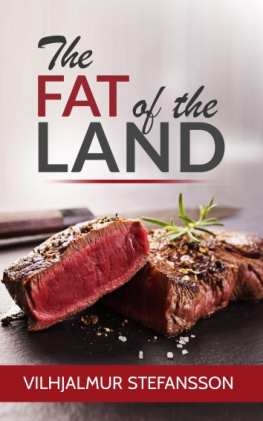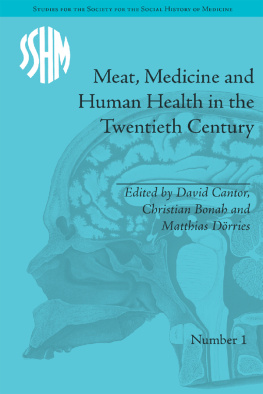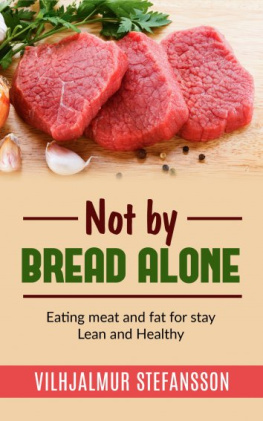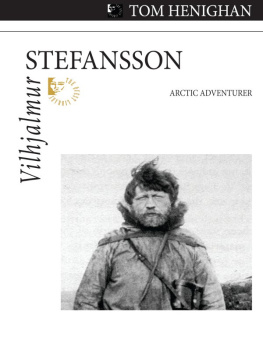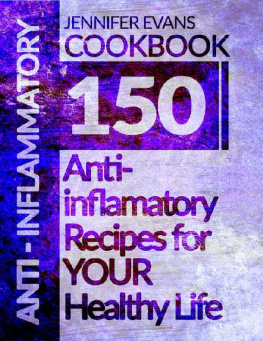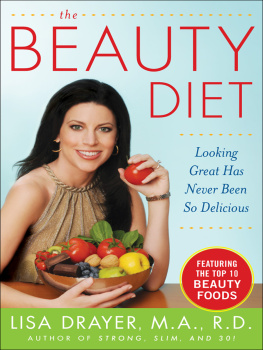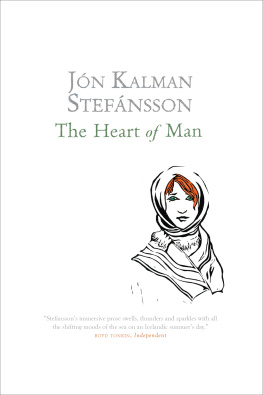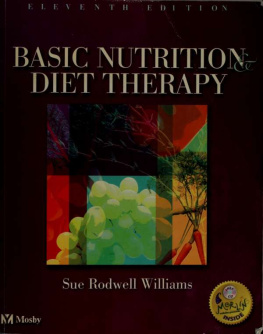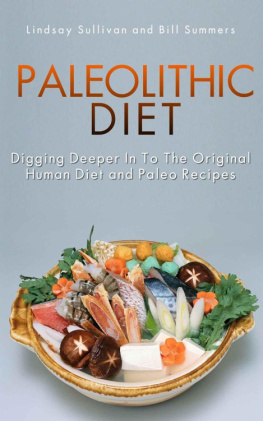Stefansson - The Fat of the Land
Here you can read online Stefansson - The Fat of the Land full text of the book (entire story) in english for free. Download pdf and epub, get meaning, cover and reviews about this ebook. City: Milano, year: 2016, publisher: Youcanprint, genre: Science. Description of the work, (preface) as well as reviews are available. Best literature library LitArk.com created for fans of good reading and offers a wide selection of genres:
Romance novel
Science fiction
Adventure
Detective
Science
History
Home and family
Prose
Art
Politics
Computer
Non-fiction
Religion
Business
Children
Humor
Choose a favorite category and find really read worthwhile books. Enjoy immersion in the world of imagination, feel the emotions of the characters or learn something new for yourself, make an fascinating discovery.
- Book:The Fat of the Land
- Author:
- Publisher:Youcanprint
- Genre:
- Year:2016
- City:Milano
- Rating:3 / 5
- Favourites:Add to favourites
- Your mark:
- 60
- 1
- 2
- 3
- 4
- 5
The Fat of the Land: summary, description and annotation
We offer to read an annotation, description, summary or preface (depends on what the author of the book "The Fat of the Land" wrote himself). If you haven't found the necessary information about the book — write in the comments, we will try to find it.
The Fat of the Land — read online for free the complete book (whole text) full work
Below is the text of the book, divided by pages. System saving the place of the last page read, allows you to conveniently read the book "The Fat of the Land" online for free, without having to search again every time where you left off. Put a bookmark, and you can go to the page where you finished reading at any time.
Font size:
Interval:
Bookmark:
The fat of the Land
by
Vilhjalmur Stefansson
Enlarged Edition of Not by BreadAlone
With Comment by Fredrick J. Stare,M.D.,
and Paul Dudley White, M.D. NewYork
TOOLIVE RATHBUNWILCOX
Collaborator on fourteenprevious books
and on this one
original edition by THE MACMILLANCOMPANY 1960 - 1st digital edition 2016 by
David De Angelis
Contents
Comment BY FREDRICK J.STARE, M.D. Professor of Nutrition and Chairman, Department ofNutrition, Harvard School of Public Health. Boston
One day last January the telephonerang. When I answered it, Paul White said: "Stefansson is in town.Could you arrange for someone to stop by his hotel room and draw ablood specimen? You know he has been eating largely meat for mostof his life, and it would be interesting to know what hischolesterol and lipoproteins run. I've already asked his permissionfor a blood specimen, and he has no objection.** Not only had he noobjection, but he came over to oar laboratory the next day tovolunteer a second specimen so that we might have duplicatesamples. And that was my introduction to Vilhjalmur Stefansson.Since then I have seen him and his charming wife, Evelyn, a numberof times; our correspondence has been frequent, and I am alwaysamazed at his intellectual vigor and his breadth of knowledge.Purely by coincidence the School of Public Health was holding aseminar on the afternoon Stefansson came over to volunteer a secondblood specimen. Two of its staff were reporting on some fieldobservations of outbreaks of dysentery in the arctic, reportswhich, of course, we were delighted to invite Stefansson to hear.In the discussion that followed, his keen mind, sharp wit, andabove all his anthropologic approach to the study of biologicproblems were most evident. Those fortunate enough to have read thefirst edition of Not by Bread Alone are aware of itscontributions to nutrition. It emphasizes the great capacity of thehuman organism to adapt to wide changes in food intake and tomaintain good health. Above all it deals with the anthropologicapproach to a biologic problem rather than with the epidemiologic,clinical, or laboratory avenues of which we hear more these days.The anthropologic approach to nutrition studies helps confirm twopointsone, that good health is realizable by means of avariety of dietary patterns; twoand this point is ofparticular significance for nutrition educationdifferentpeoples evolve their own evaluations or standards as to proper andimproper dietary patterns. Stefansson spent many years living withthe Eskimos in the days before the white man's habits had pervadedthese people. He was not a trader, not a missionary, but anobserver who took copious notes, most of which are in his pricelesscollection of arctic lore in the Stefansson collection at the Dart*mouth College Library. The study of cultural factors in nutritionhas emerged only recently as a distinct focus of research, markedby the formation of the Committee on Food Habits of the NationalResearch Council in 1941. Wellin, writing in NutritionReviews a year ago, mentions that the concept of culture asdeveloped in anthropology refers to those aspects of humanexistence transmitted through language and group life: "In anygiven society, culture is the design for living developed by thegroup, a set of 'regulations' governing the conduct of members. Forthe individual, culture acts as a screen of values and perceptionsthrough which the person views food, his own body and his health,and the world." Stefansson began his anthropologic studies of theEskimos a half-century ago, and thus was one of the first to usethis discipline in human biology. It was his observation of thegood health of the Eskimos, particularly their good teeth, thatinterested him in relation to their "lean and fat" diet of meat andthat led him in later years, with his friend Andersen, to carry outunder scientific scrutiny their year-long meat diet described inthis book. The dominant theme of Not by Bread Alone,whether one is reading about steaks, pemmican, K rations, orbiltong, is the importance of meat, lean and fat, in the diet.While Stefansson's early interests result from his personalexperiences in the arctic, he has learned much from other travel,extensive reading, correspondence, and discussions. Stefansson hasprobably consumed more meat than any other person today. When Igave him dinner at the Harvard Club, Boston, it was roast beef withan extra serving of beef fat; at our home it was steak, with extrafat. Nothing else except Martinis and cheese. Some of the fat isconsumed first. This sounds a little like the DuPont-Holiday-Pennington diet one read so much about a few yearsago. In fact, that diet was the Stefansson regimen dressed up witha little "bedside manner" which is a half-hour morning walk and"absolutely no alcohol." It is of interest to consider Stefansson'shigh intake of animal fat in connection with the current interestin atherosclerosis. Has it been good or bad for him? Would it begood or bad for you? Life expectancy at the time of Stefansson'sbirth was many yean less than it is today, but he is seven yearspast what it is today. Butand in my opinion an important"but"Stef has never been obese; he has always been activephysically, and he doesn't overeat. Should you start eating moremeat, and particularly more animal fat? That depends on what youlike to eat, how much you want to spend for food, and how carefullyyou watch your weight. Of course, if we all began eating more meat,there soon wouldn't be enough, particularly of the "choice" cuts.But the tenderizers do a good job of turning a chuck or top of theround into a first-class dish. I once asked Stef if the Eskimosused any tenderizing procedure for the tougher cuts of meat, and hereminded me that the answer was in his Not by BreadAlone"even indexed under chewing!" The answer is thatthey don't; but neither do they do much chewing. "The uncivilizedEskimo has never had practice in herbivorous mastication and hismother has never told him to chew for the good of his health. So hegives the piece a bite or two, rolls it around his mouth once ortwice, and swallows." But Stef is quite convinced that the toughercuts of meat have the best flavor, and at home Evelyn usestenderizers generously. One of the most interesting developments ofmodern nutrition has been the emergence of a number of studiesemphasizing the great ability of experimental animals, includingman, to adapt to wide variations in diet. We all need protein,carbohydrate, fat, various vitamins and minerals, and water. But wecan get these from a great variety of foods; and Stefansson tellsin this book why he thinks we do not actually need any morecarbohydrate than is contained in whole meat and whole milk. Eventhe amounts of these nutrients may be varied appreciably, dependingon the rest of the composition of the diet. It doesn't surprise methat Stef is in good health at seventyseven, several years afterhis life expectancy. We have studied a number of vegetarians ofcomparable age and of equally good health. What is important isthat our diets provide us with adequate amounts of the many aminoacids, vitamins, minerals, and fatty acids we need, plus enoughenergy to balance our caloric needs so that we keep our weight inthe desirable range. It is also important that we enjoy what weeat. I hope this new edition of Not by Bread Alone, underits presently controversial new name The Fat of the Land,will be as entertaining to you as it has been to me. July,1956.
Comment BY PAUL DUDLEYWHITE, M.D.
Is a pleasure to write a commentfor this new edition of Vilhjalmur Stefansson's book, originallyentitled Not by Bread Alone. In view of his interest in ahigh fat diet he has asked me to summarize briefly my ownexperiences and thoughts on the subject of life and heart diseasewith particular reference to the causes of high blood pressure andof coronary atherosclerosis, which is the basis, when of highdegree, for the clinical condition of angina pectoris and coronarythrombosis. For a good many yean we doctors have talked about thesethings but only relatively recently have we done much more. Evennow we are barely scratching the surface. There appear to be twosets of causative factors, which may or may not be of equalimportance. These are the basic or fundamental factors whichconcern the host and which one can do little about and theenvironmental factors which can be altered and the control of whichmay in some way neutralize or even supersede the harmful effect ofthe basic factors, thus combating an attitude of hopeless fatalism.Prominent among possible basic factors are race (a doubtful factorper se); heredity, which appears to have a potent influence (nomatter what the race); age, which is an insuperable factor as faras chronology is concerned, but which may prove to be amenable atleast to some degree as far as physiological age is concerned; andsex, which is heavily weighted against the male in youth and middleage. Among the possible environmental factors are stress andstrain, which have as yet been inadequately studied; exercise,which has been hopefully looked to by some of us as of some use inprophylaxis but the value of which is as yet unproved; toxicagents, in particular tobacco and alcohol, which are of doubtfulimportance; and diet, which now holds the limelight. Most workersin the field regard overweight from overeating as a harmful factorthough not the chief cause behind hypertension, and a dietover-rich in total fat calories (such as the typical American dietin which 40 to 50 per cent of the calories are in fat) as a potentfactor in the overwhelming epidemic of coronary heart disease whichhas descended upon us in the present generation as a perniciousblight. On the other hand, there is a handful of observers likeVilhjalmur Stefansson who have other ideas, in fact almost theopposite; namely, that a diet very rich in fat (up to 80 per centof the total calories), with the rest of the calories in protein,is best for the health. This raises the question: Is it possiblethat the extremes of fat intake, i.e. very high (80 per cent) orlow (so to 30 per cent) are safer than intermediate mixtures offairly high fat (40 to 50 per cent)? Dr. Stefansson presents hisside of the case in a new chapter in this book. More controlledscientific data are needed by all concerned, especially by thehigh-fat proponents. In any case to paraphrase the title of thebook we may say that coronary heart disease is caused "not by fatalone," despite the probable major importance of excessive fat inthe diet. I quite agree with Stefansson that a study should be madeof high fat eaters (80 per cent and over) in contrast tointermediate and low fat eaters who otherwise live the same way.If, however, the diet eventually proves to be an important key toour current problems in counteracting the effect of heredity, wemay rest content. July, 1956.
Next pageFont size:
Interval:
Bookmark:
Similar books «The Fat of the Land»
Look at similar books to The Fat of the Land. We have selected literature similar in name and meaning in the hope of providing readers with more options to find new, interesting, not yet read works.
Discussion, reviews of the book The Fat of the Land and just readers' own opinions. Leave your comments, write what you think about the work, its meaning or the main characters. Specify what exactly you liked and what you didn't like, and why you think so.

